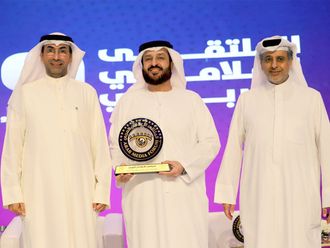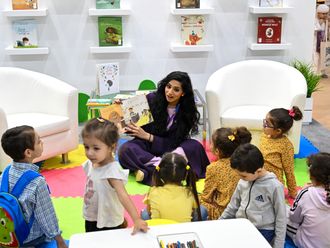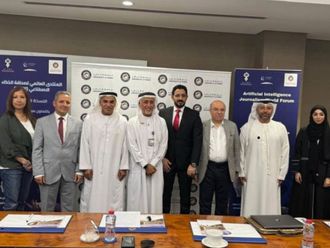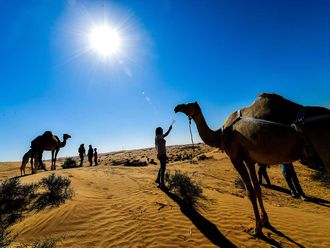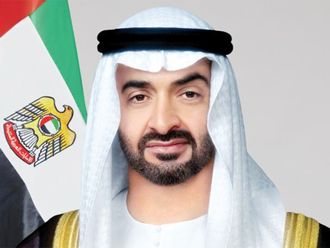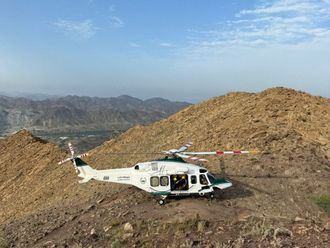A workshop organised by the Emirates Environment Group last month turned out to be an interesting experience for the 42 teachers who attended it
This was the first time that the Emirates Environmental Group (EEG) organised a training workshop for teachers.
It was also the first time that two non-governmental organisations in the Emirates – EEG and World Wide Fund for Nature (WWF) – worked side by side towards a common goal: environmental education.
"This workshop," says Habiba Al Marashi, chairperson, EEG, "will help teachers motivate students to embrace green thinking." Participants would be given tips on practical education methods rather than theoretical and be made to understand 'sustainable development'.
Friday attends the workshop to gauge the current thrust in eco-education and speaks to key resource persons.
The programme focuses on 'training the trainer'. Plenty of environmental education resource materials greet teachers as they arrive on October 7, 2001, at the Towers Rotana Hotel, Dubai, for a workshop, 'Environment Across the Curriculum'.
Present are 42 teachers from schools in Sharjah, Al Ain, Abu Dhabi and Dubai; and resource persons: Habiba Al Marashi, Luc P. Deslarzes, senior policy adviser, environmental education, WWF International, and Frederic Launay, acting director, WWF UAE Project Office.
A film runs in the background – children absorbed in examining biological features at a nature camp; constructing a poultry pen extending over a fish pond so the droppings of chickens serve as food for fishes; planting trees in a school campus; learning how to recycle paper... There is also a stack of similar films available for viewing.
But first, 'the dark face of the environment' because, like it or not, it is real and we are largely responsible for it. Fred races us through some depressing realities. The burgeoning human population.
| Fredric Launay |
"Let's leave our children a living planet. To make this possible, our consumption patterns must change, and environmental education plays a big role in making this happen," Fred concludes.
To lighten the air, Luc takes over with a dig at an 'ecologically sensitive' future generation – teacher ribs student: "But Harry, you have to do more to save the world than just wear the right T-shirt!"
Seriously speaking, it is an optimistic view that Luc takes, defining environment education and pointing out what an enjoyable, creative teaching exercise it could be if used imaginatively in various disciplines.
A cartoon flashes on the screen - conversation with a farmer: "Do you use any chemicals on your vegetables?"
"No."
"How come?"
"No need to, there's enough in the rain."
We get down to some interesting examples of how educators in many countries are using stories, problems, solutions and activities relating to the environment.
In language lessons, for instance, we may use A for Antelope, B for Butterfly, C for Coral instead of the usual Apple, Ball, Cat... Maths, too, presents many possibilities. Think of a method to count leaves on a tree in your schoolyard, other than cutting down the tree, of course!
This exemplifies active mathematics used by the WWF UK. Sciences are the easiest to handle because the courses cover species, ecosystems, and biological diversity. In Switzerland, students prepared a map of the Swiss forests based on materials collected by them, Luc tells us.
Jog along the sea and point out features as part of physical education; introduce recycled paper in art lessons; use songs about nature in music classes; and talk about the management of waste in civic education.
These are some useful ideas on how environmental studies can be incorporated in different subjects. Besides, teachers must also use children to draw the attention of parents towards nature conservation.
During the coffee break, we browse through the vast array of educational material on display. These, as well as nature education video films will remain in the EEG office for a while for anyone to peruse and, if interested, place a purchase order with WWF International, Gland, Switzerland.
Habiba reminds participants that there are also a couple of EEG environmental resource materials pertaining to the UAE, specifically, Don't Waste our World, about waste management, and Hamloul, on the caring camel.
Post break, the participating teachers jot down their ideas on what EEG's education priorities should be. Suggestions pour in.
From recycling text books to outdoor trips; from workshops to quiz competitions; from poultry farming on a small scale in schools (most children have only seen dressed chickens in supermarkets) to using student power for educating society; and from conducting workshops to stepping up awareness work in local schools.
Most ideas fall into three categories – communications, resource materials and support for school activities.
Clearly, far too much is expected from an already burdened EEG! Although Habiba didn't find the ideas original, she would be happy to discuss these one on one with teachers.
Better still, she wishes teachers would meet with each other to confer on the issue and share the results with EEG. "Help me help you," she entreats.


